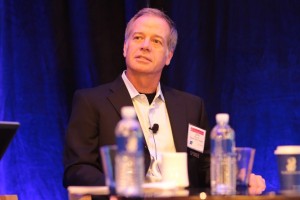
- Oregon paid .77 pct in mgmt fees vs .81 pct for peers
- Portfolio maturity, tough negotiations cited as cost savers
- Retirement fund paid $300 mln in PE fees in 2013
As Oregon’s private equity portfolio grew from $9.8 billion to $14.3 billion between 2009 and 2013, the costs associated with running that portfolio remained relatively flat, according to a CEM Benchmarking report presented at the state’s Dec. 3 investment council meeting. In 2009, Oregon paid $287 million in external management fees. Five years later, it paid just $12.3 million more in fees for a portfolio that had grown by $4.5 billion.
Limiting external management fees reduced the cost of Oregon’s total portfolio. Oregon’s peer group, which includes notable private equity investors such as the Virginia Retirement System, Washington State Investment Board and the Wisconsin State Investment Board, paid an average of 0.812 percent of their market value in fees last year. Oregon paid 0.772 percent, according to CEM Benchmarking.
That minor difference may seem small, but it amounted to about $25 million in cost savings for the state’s $67.1 billion retirement system.
“Your external investment management costs are less expensive,” said CEM Benchmarking’s Bruce Hopkins, according to an audio recording of the investment meeting. “What is driving that in particular is private equity. What you are paying in private equity is materially less than what your peer group pays in private equity.”
Limited partners pay a large amount of their investment management fees to private equity firms, which typically charge their investors a larger fee compared to managers in other asset classes. Oregon’s 21.3 percent allocation to private equity ate up roughly three-fifths of the state’s external management costs in 2013.
Because private equity accounts for so much of the retirement system’s investment costs, Oregon’s ability to reduce fees within that portfolio kept total costs down compared to its peer group.
The CEM Benchmarking report attributes Oregon’s lower costs partly to portfolio maturity. Firms often reduce their management fees upon the conclusion of their vehicles’ investment periods, which generally run for five years after the fund begins investing. Oregon was one of the industry’s earliest public investors, committing hundreds of millions to Kohlberg Kravis Roberts’ earliest funds. As such, many of the funds in the retirement system’s portfolio are no longer actively investing.
Oregon has also benefitted from its ability to negotiate LP-friendly terms on larger commitments to its longtime managers. The Blackstone Group and TPG Capital charge below-market management fees on separate accounts managed on behalf of Oregon, according to state documents.
Drawing a hard line on fees kept costs down on more traditional fund investments, too. In May, the Oregon Investment Council voted down a proposed commitment to Warburg Pincus’ energy fund because the firm did not offer LPs a preferred return. On at least two occasions in 2014, investment staff canceled council-approved commitments to new private equity vehicles after they failed to come to an agreement on fund terms, CIO John Skjervem said earlier this year.
“These are not adversarial issues; we came close,” Skjervem said at the time. “We just shook hands and said, ‘maybe next time.’ We want to adhere to the underwriting principles that have been endorsed by our council, and in certain cases we weren’t able to maintain those principles throughout the negotiating process.”
Skjervem could not be reached for comment on this article.
Hopkins said in an interview that he could not say if tough negotiations on terms, as opposed to portfolio maturity, played a greater role in keeping costs down.
“Having matured, fees have naturally come down,” he said. “But it’s hard to say how much of the advantage today is due to vintage vs. skill, but I think it’s true that they’ve been diligent to negotiate the best possible fees.”


 If you do not receive this within five minutes, please try and sign in again. If the problem persists, please
email:
If you do not receive this within five minutes, please try and sign in again. If the problem persists, please
email: